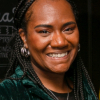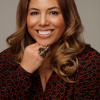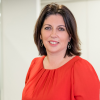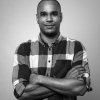
Dr. Martens champions sustainable fashion
Genix Nappa, a new material made of leather offcuts, aims to reduce waste

An inclusive, diverse workforce is crucial to the happiness, creativity and success of the industry

It’s no secret that the advertising industry has a diversity problem. The most recent All In Census revealed that just 1% of black talent is in C-suite positions and 20% of UK advertising professionals attended fee-paying schools versus a national average of 7%.
Alongside this the industry is also facing a talent crisis, post-pandemic people have a renewed sense of what’s important and working for a company that places diversity and inclusion at its heart is higher on the agenda than ever.
Not only are inclusive workplaces the most appealing for employees, they are responsible for some of the best work and best creativity. Only when people feel they belong and can bring their true selves to work can they put their full energy and passion into work.
Knowing that a diverse, inclusive workforce is essential for creating great work, increased wellbeing and the happiness of the industry’s greatest asset, its talent; we asked industry leaders what one thing would you like to see the industry do differently in 2022 when it comes to building a truly inclusive and diverse workforce?

Whilst the industry has made commitments for increasing representation and building inclusive environments, I would love to see us move beyond the metrics and tackle the systemic barriers that exist.
There is still a belief that advertising jobs via ‘inclusive’ jobs boards or adopting positive action drives will change the dial on representation. But this is still very surface level and ‘others’ communities by saying the only way you can get into our industry is through a programme, it presents a ‘less than’ mentality to the people you are trying to engage with’.
We really need to dig deep to understand the barriers for growing communities. Some of these will be internal factors, such as nepotism, unconscious bias and microaggressions, and others will be attitudes towards joining the industry, how previous generations were excludedd how we have tackled these issues going forward. A lot of recruitment practices still assess the ‘fit’ rather than the ‘add’ and implies a level of code switching is needed to be included, there is still a lack of understanding of the nuances of different communities and we need to move beyond inclusion and move towards belonging and acceptance.
As a Black woman in my 40s I no longer feel the need to code switch to be accepted and want other people from growing communities to feel the same way. My question to the industry going forward would be, systemically what have you changed in the last 2 years?

Too often, companies apply a reactive approach to diverse hiring - but before even considering building their workforce in this manner, a lot of groundwork should be put into place in order to set the company up to appropriately support, uplift and include people both during the hiring process and during their tenure at the company once onboarded. I’d therefore like to see the industry shift this approach and mindset to a more proactive, considered one.
In our industry, reaching people beyond the typical pool of candidates is one piece of the puzzle. From speaking to our Collective of people from underserved communities, at the DSC we have found that even a simple job description or filling in an application form can have companies falling at the first hurdle. For the Trans community as an example, businesses that fail to allow candidates to share their gender expression and preferred pronouns on a simple form, can send a wider message of what the working experience would likely be and therefore can dissuade people from applying in the first place. And once hired, the community have recalled experiences of facing harassment, microaggressions, and more - but have found senior decision makers to be under-equipped and ill-informed on how to deal with these issues. This has a detrimental effect on inclusion, belonging and ultimately retention within the workplace.
Rather than leaving it to the individual employee to educate those around them, the responsibility falls on management and senior industry figures to ensure that education is provided, and to create a working culture where difference is celebrated rather than tolerated or treated with hostility. This can involve rethinking zero-tolerance policies, training HR to be able to handle any issues that may arise, right through to overhauling all company communications (including application forms) to ensure that they have appropriate inclusive language. From our work with brands who are trying to achieve this, we know it’s not something that can happen overnight, or be retrospectively rectified as a ‘quick fix', but needs to be put into place well in advance - after much consultation and ideally co-creation with experts from those underserved communities. It’s absolutely crucial to ensuring that an inclusive, equitable workforce truly stands the test of time.

As an industry, we need to attract women – which is why 2022 should be the year to fully embrace flexible working. New mothers returning to work can hugely benefit from this. With 64% of mothers the primary carer of their children, flexible working allows women to rebuild careers.
We invest heavily in female talent pre-maternity, let’s not waste the experience and talent post. Companies should incentivise new mothers to return to work, providing programmes to help integrate them back into the workplace.
A gender pay gap of 23.3% in favour of men still exists, according to the latest IPA Census survey – despite the highest-performing companies on both profitability and diversity having more women in line roles than in staff roles on their executive teams, according to McKinsey.
With women in C-suite roles still off the 40% target the IPA set in 2017, we need more women to stay in the workplace to develop in senior roles with increased remuneration.
So, let's support new mothers in the workplace – it's already a stressful time with sleepless nights filled with uncompromising demands, the last thing we need is a workplace that directly mirrors this.
We need to attract younger generations with an industry offering of both a successful work and home life, built on a diverse and inclusive workplace, empowered by women and mothers.

Everyone deserves to feel like they belong, so they can truly reach their potential. The industry needs to provide a more structured and measured approach to DEI transformation that reaches all parts of organisations and helps leaders understand how valuable existing programmes and initiatives are and where the gaps might be. This is why we launched our Inclusion Experience Practice, designed to help businesses culturally transform to become and remain employers and brands of choice.

I would love to see the industry make inclusivity a more integrated part of training and learning for everyone. We need decisive and positive action and I believe that open and honest conversations, without fear of retribution, that guide education and learning is the key. There is some great work happening across the industry, but we need to do more to accelerate change.
NABS recently produced a research project, Diversity in Focus, together with our partners Brixton Finishing School and ADcademy, MEFA and Outvertising. It takes a deep dive into the experiences of adlanders from underrepresented groups. The stories shared are stark: of people never reaching their potential, of having to continually mask their true selves, and suffering mental health challenges, because our industry is not fully inclusive.
One key finding is that managers need to tailor their style to each employee, using empathy to build trust and support. We’re proud to be launching a course on inclusive leadership as part of our new NABS Training offer, which will give leaders the practical knowledge they need to build teams that welcome and support people from all backgrounds.
The research also highlighted the need for a central source of support for underrepresented communities. NABS will build on the work we do in this space by launching a free programme to boost confidence and wellbeing among minoritised individuals. With coaching and mentoring with ‘people who look like me’ as part of the programme, role modelling and relatability should help people feel as though they have a place in our industry.

I’m not a ‘we just need to change one thing’ person; there are no silver bullets to getting diversity and inclusion strategies right.
Great and truly imaginative work comes when people with different experiences, from diverse cultures and ethnicities, gay, straight, male, female or trans, of all ages and with multiple interests, come together to address a problem. Solutions may come collectively or through an individual spark of genius. They will come consistently if we find ways to ensure that everyone feels able to be their true selves in the workplace and to express themselves freely.
We should all be as comfortable in the office as we are at home or with friends. And to bring this about we need to create open structures, encourage regular, honest, and respectful feedback, and ensure that we all take time to get to know the people we work with. A starting point is to listen to your own team’s stories and how their careers might be impacted by say, their colour, sexual orientation or raising a family. If we understand the obstacles that get in the way for people already in our businesses – and, critically, are prepared to do something about them – then we’ll make some quick progress. But that’s just the beginning …

A huge part of making a change in diversity in our industry will come from taking a new approach to the recruitment process.
We can speak first hand of the poor state of play in the creative professions. Thompson is currently growing and we have ads out with over a dozen recruiters; sadly all of those recruiters have been surprised at our request for anonymised job applications. The feedback we’ve had is we’re the only agency asking them to take this simple step to start to remove implicit bias. Even after this firm requirement we’re still receiving CVs with names and photos. This important change was part of our overhauled recruitment process and we shouldn’t be alone in that.
Rewriting the job spec and explicitly stating an intention to embrace a diverse workforce has been shown to reduce barriers to application from those from excluded groups. Because of this, we’ve removed any reference to qualifications in our job specs. This helps us base our hiring decisions on who can do the job rather than who has a relevant university degree. We’ve already reaped the benefits of this approach; our Senior Developer applied for a position with us, wanting to get into a creative role but finding no success having not graduated from a university.
Change will come through committing to and outwardly communicating a determination to do things differently; in the creative sector we need to hold each other accountable for how we find new talent by actively taking down barriers in the recruitment process.

If only it was so simple to condense it down into “one thing”, the truth is building a truly diverse and inclusive workforce is really complicated and challenging (trust me, I know, I’m still trying). We don’t work in silos, we are part of many wider communities. We don’t leave the influences of society at the office door, no matter how progressive the environments we create are. However, if we are to have any hope in building truly diverse and inclusive workforces it’s less about the big headline grabbing initiatives. The “one thing” has to simply be everything, every day, in every area of your business. DE&I values need to be built into the very core of your offering, values that penetrate everything you do, every policy, every decision, every proposal, every presentation. DE&I is a lens in which you can and should look at every situation through, informing your decision making, at every step of the way.
It’s easy to have progressive ideals, to want to see positive change, or to make a pledge. But to actually be part of the change we desire you have to actively build your DE&I values into how you operate day to day, this is where the real progress is made, one small step at time, all the time.
Looks like you need to create a Creativebrief account to perform this action.
Create account Sign inLooks like you need to create a Creativebrief account to perform this action.
Create account Sign in